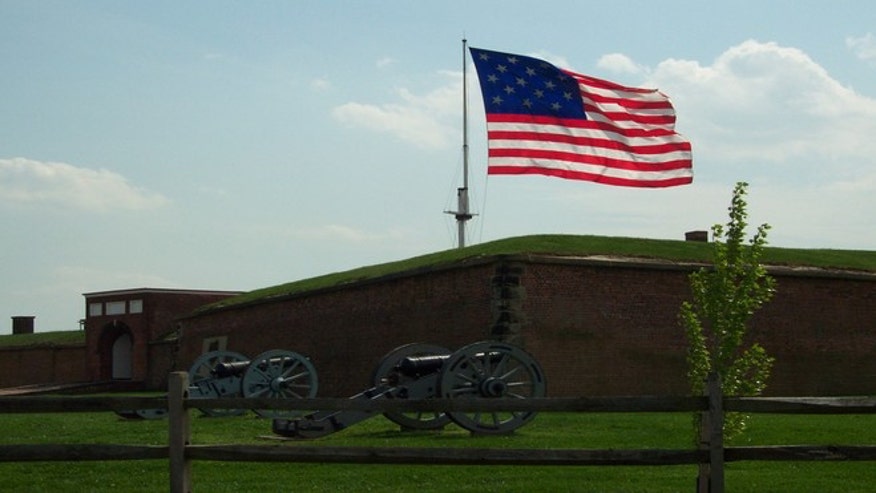The untold story of The Star-Spangled Banner

The untold story of The Star-Spangled Banner
This weekend marks the 200th anniversary of the writing of The Star-Spangled Banner.
Not only our national anthem, the Star-Spangled Banner was the flag that flew during the War of 1812 during the Battle of Baltimore at Fort McHenry, inspiring Francis Scott Key to write the words that would become the famous song.
Around the country there will be celebrations to mark this historic event.
Baltimore will be pulling out all the stops and is hosting the Star-Spangled Spectacular includes historic tall ships, Blue Angels flyovers, the state's largest-ever fireworks show, and a concert featuring acts such as Smokey Robinson, Kenny Rogers and Melissa Etheridge.
Washington, D.C. will hold several events, including a sing-along of the anthem on one of the lawns adjacent to the U.S. Capitol building and a cocktail event Friday evening at the Smithsonians National Museum of American History.
Many other local communities will be hosting the singing of the anthem and other patriotic events.
Knowing the words to "The Star-Spangled Banner" is one thing, but how much do you know about the song itself? Here are five historical facts about our national anthem that may surprise you.
1. It was written with its current melody in mind.
It is commonly believed that Francis Scott Key wrote "The Star-Spangled Banner" as a poem that was later set to music, but this is not the case, according to Dr. David Hildebrand, the director of the Colonial Music Institute.
"The structure doesn't match any poem," Hildebrand says about Key's words.
Early copies of "The Star-Spangled Banner" simply included the lyrics because the tune was already so well known, Hildebrand explains.
Another interesting fact: Key's original title was called the "Defence of Fort McHenry."
2. It has male glee club origins.
Some rumors suggest that "The Star-Spangled Banner" was set to the tune of an old drinking song, but the tune has nothing to do with the consumption of alcohol, Hildebrand says. In fact, the drinking songs of yesteryear were more aristocratic male glee club and less "99 Bottles of Beer on the Wall."
The origins for "The Star-Spangled Banner" came from "The Anacreontic Song" -- a theme song of sorts composed by John Stafford Smith for the Anacreontic Society, an 18th century amateur musicians' club for men. "The Anacreontic Song" is also sometimes called "To Anacreon in Heaven," which is also the opening line.
3. It is one of many songs written to the same music.
About a hundred different songs have been written to the melody of "The Anacreontic Song," Hildebrand says.
Key himself had already written words to the melody about nine years before the Battle of Baltimore, and this version opened with:
"When the warrior returns, from the battle afar, To the home and the country he nobly defended..." A patriotic ditty called "Adams and Liberty" was popular around the turn of the 19th century.
After Thomas Jefferson took power, a set of lyrics entitled "Jefferson and Liberty" were penned.
4. The smaller flag was likely flying "at the twilight's last gleaming."
Historians believe that the famous flag -- incredibly large at 30 by 42 feet -- wasn't flying the night of the attack. Hildebrand explains that it was pouring rain, so Fort McHenry was probably displaying a smaller storm flag (17 by 25 feet long).
Mary Pickersgill was asked to sew the two flags for the fort, making her, not Betsy Ross, the woman behind the star-spangled banner flag.
Hildebrand says this does not undermine the significance of the flag or the anthem, and the grand flag was flying "by the dawn's early light."
The large flag is now part in the Smithsonian Institution's National Museum of American History in Washington, D.C., but the whereabouts of the storm flag are unknown.
5. It didn't become the official national anthem until 1931 .
While "The Star-Spangled Banner" was popular during the 1800s, the song didn't become the national anthem until the early 1930s. The military had adopted it for ceremonial purposes decades earlier, but it took legislation signed in 1931 by President Herbert Hoover to make it official.




.jpg?ve=1&tl=1)


The origins for "The Star-Spangled Banner" came from "The Anacreontic Song" -- a theme song of sorts composed by John Stafford Smith for the Anacreontic Society, an 18th century amateur musicians' club for men. "The Anacreontic Song" is also sometimes called "To Anacreon in Heaven," which is also the opening line